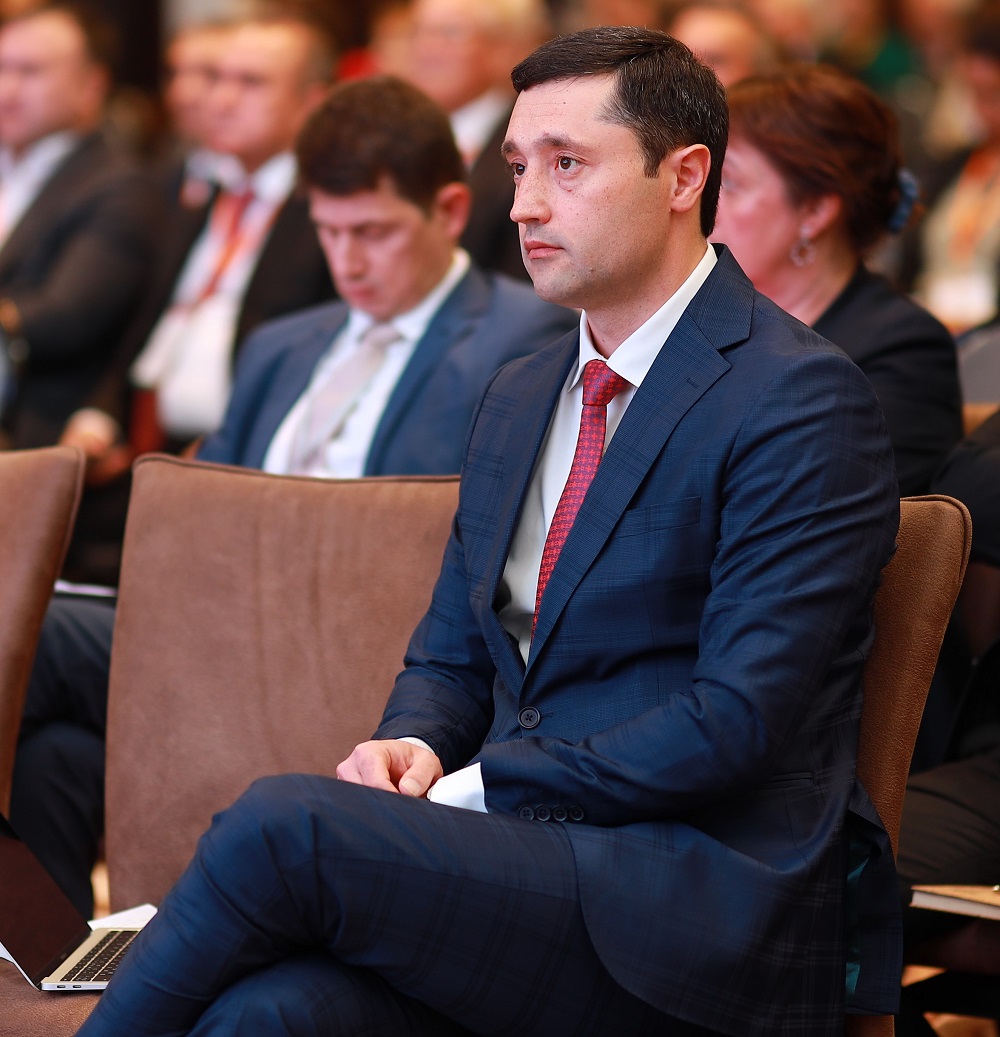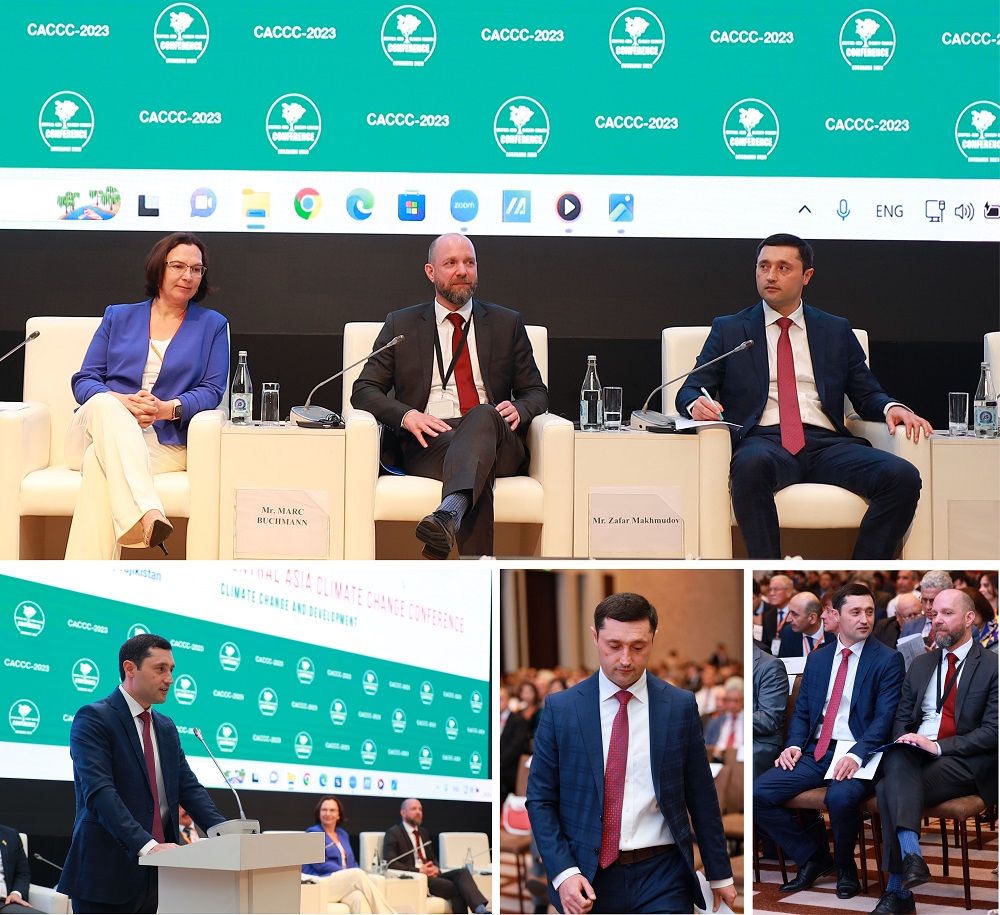On May 16-17, Dushanbe hosted the regular 5th Central Asia Climate Change Conference (CACCC-2023).
It convened representatives of development sectors that are involved in climate issues in all five countries of the region, world-famous experts, specialists who have thoroughly studied the natural features of each country locally, and international organizations providing donor support in countering the climate challenges of the 21st century.
In addition to in-person participation in the Dushanbe Climate Forum, there was an opportunity for specialists and development partners to attend online from Central Asia and other countries. So, the Conference had a geographical coverage of a planetary scale. Also, there was significant participation in CACCC-2023 of the Nobel Peace Prize winner for the dissemination of scientific knowledge on the problem of climate change Alexei Kokorin.
The Regional Environmental Centre for Central Asia (CAREC) held the 5th Central Asia Climate Change Conference, which has already become traditional. This year the conference was organized jointly with the Committee for Environmental Protection under the Government of the Republic of Tajikistan within the projects “Climate Adaptation and Mitigation Program for Aral Sea Basin CAMP4ASB Additional Financing” (CAMP4ASB AF), Central Asia Nexus Dialogue Project: Fostering Water, Energy and Food Security Nexus and Multi-Sector In vestment (Nexus), PROGREEN and the Central Asia Water & Energy Program (CAWEP), which is a partnership between the World Bank, the European Union, Switzerland and the United Kingdom.
Accordingly, Zafar Makhmudov, Executive Director of CAREC, made the first generalized comment.
- What would you call the most important result of the conference?
- If you expect a lengthy answer, as your question suggests, you will be disappointed.
My answer is short. The most important thing is to work on maximizing the good and positive outcomes from the negative impacts of climate change. So, to speak, a positive view of climate challenges.
- It sounds paradoxical, could you explain with an example, please
- For example, the events held before and after CACCC-2023 became part of an integrated approach to using CACCC as a united platform for cooperation and promotion of solutions to climate change in Central Asia. A significant event of the Conference was the plenary session and panel discussion on the national strategies of the countries of Central Asia. The participants in these sessions discussed how climate change is affecting the region. Each Central Asian country presented its national policies, strategies and programs for climate change mitigation and adaptation, including the integration of updated NDCs into country strategic documents. It was a good example of experience exchange at a high regulatory level.
To form a clearer picture and display the Conference coverage, I would like to tell that the participants also discussed the issues of strengthening regional cooperation in a changing global political environment. They paid great attention to the problems of public health and climate resilience, which are related to air quality problems and the adaptation of local communities to climate change.
Another good example of extracting positive aspects from climate challenges is the implementation of the principles of the well-known circular economy. This is a very promising direction for CAREC and the sustainable development of the region, and CAREC is already implementing the REAP project on circular economy.
I would like to note that the countries of Central Asia are increasingly investing in renewable energy sources: solar, wind and hydropower. And this in the backdrop of ambitious plans. For example, Kazakhstan plans to produce 50 percent of its electricity from renewable sources by 2050; Uzbekistan 25 percent by 2030. Kyrgyzstan has started construction of the first solar power plant and wind park.
- CAREC has been the organizer of the Conference since 2017, how would you characterize the features of the current year 2023
- Firstly, in 2023, at the 28th Conference of the Parties to the UNFCCC, the results of the implementation of the Paris Agreement will be summed up. Therefore, it can be safely called a turning point in the global climate agenda. Much depends on the results of the first global inventory.
I must say that all five countries of Central Asia are parties to the Paris Agreement of the UNFCCC, and at the Conference, they presented information on the implementation of their Nationally Determined Contributions (NDCs). To a certain extent, the Dushanbe conference is one of the significant stages in the preparation of the countries of the region for participation in the COP-28.
Secondly, we discussed such an important issue today as climate finance. I want to emphasize that the participants of the Conference themselves noted the need to jointly develop a comprehensive framework for mobilizing climate finance for the countries of Central Asia. This structure will unlock the possibilities of green finance and use the potential of already existing regional structures.
Thirdly, at this conference, we saw and realized that climate challenges affect the most significant public areas: food, health, water resources, nature, culture and economies of our countries.
Almost all participants noted the need for a consolidated solution to the climate and environmental problems in the region. CAREC will continue its purposeful work in this direction.
- What are the main climate trends identified at CACCC-2023
- Let's just say that the Conference once again focused on those areas that were initially determined by the current climate reality. We only discussed the key issues and came to the following conclusions. CAREC, together with national, regional and international partners, is already working in these areas, but our activities should be strengthened, expanded and consolidated in the region. I will list them in accordance with the areas that require our attention and joint decision at the regional level.
So, the first is decarbonization in Central Asia. For now, the stated ambitious goals will help meet the region's short-term energy security needs and implement its long-term growth prospects. The emphasis is on the use of renewable resources and reducing dependence on fossil fuels. Regional cooperation and electricity trade can play a key role in achieving decarbonization.
Another important aspect of decarbonization is the improvement of air quality and, accordingly, the health of the population. Air quality, climate change and health are interrelated issues that require an integrated approach in policies to reduce greenhouse gas emissions.
The second is adaptation to climate change in the region. In the Sixth Assessment Report, the Intergovernmental Panel on Climate Change (IPCC) concluded that climate change is a serious threat to Central Asia. In the region, the temperature increase is higher than the global temperature. This fact can become a trigger in reducing the amount of water resources due to the melting of glaciers in the territory of the Central Asian countries. Here the issue of effecient water resources management becomes especially relevant. Thus, climate change adaptation in Central Asia requires a multisectoral and multi-stakeholder approach, integrating traditional knowledge with modern science and involving local communities, governments, civil society and the private sector. It also requires long-term planning, policy development and implementation mechanisms to ensure climate resilience. These are issues discussed at the plenary and panel sessions of CACCC-2023.
The third is the management of water resources in the region. In this direction, the experience of the Blue Peace Central Asia initiative may be worthwhile. The Swiss Agency for Development and Cooperation (SDC) and CAREC are committed to further strengthening the evidence base and providing knowledge resources to facilitate the cross-border exchange of reliable data on the quality and quantity of available water and cooperation among the countries of Central Asia. A recent study on the multifactorial impact of climate in the mountainous region of Central Asia showed that, on average, the weather is getting warmer and wetter, both in terms of precipitation and runoff. More severe hydrological extremes are likely to require more adequate mitigation and adaptation measures, and serve as a catalyst for climate finance. I note that transboundary cooperation in water management is crucial for the well-being of the countries of Central Asia.
The fourth is climate finance. As I have already said, the countries of Central Asia need to develop a unified system for expanding green finance initiatives at the public and private levels.
The fifth is sustainable water, energy, food, and environmental security. In line with green development priorities, the region countries are looking for ways to make more efficient use of vital resources such as water, energy, food, and sustainable access to investment. In this sense, the Nexus multisectoral approach, which is being implemented in the region by CAREC and its partners, deserves interest.
And most important is information, promotion, education on climate change issues, which covers all sensitive, multifaceted aspects of climate change, ecology, environment, agriculture, water resources, etc. We need to build the capacity of local communities and public institutions. It is, the understanding and appropriate response to climate change that is critical to effective adaptation. In this direction, CAREC, with the support of the World Bank, is implementing the Regional Program for Climate Change Adaptation and Mitigation for the Aral Sea Basin (CAMP4ASB). It has proven so effective that it received additional funding in 2022 from the Green Climate Fund.
- What would you like to say in conclusion
- I want to draw attention again to the fact that without the region consolidation, it will be difficult for us to withstand climate challenges. The countries of the region are historically and geographically interconnected. Climate problems in one country will inevitably affect other countries in the region in one way or another. Integration is vital for the successful development of the region in the face of climate change. It is of great importance for CAREC that we are already creating conditions for partnerships between the countries of Central Asia, which have the same values and can develop a common climate position in the global space.
On behalf of CAREC, I would like to thank all of our partners for the successful Conference in Dushanbe: The Government of the Republic of Tajikistan and the Committee for Environmental Protection under the Government of the Republic of Tajikistan, the World Bank, the European Union, the Governments of Great Britain and Switzerland and all other partners, for financial and technical support.
By Zhanna Khusainova
Almaty – Dushanbe – Almaty

